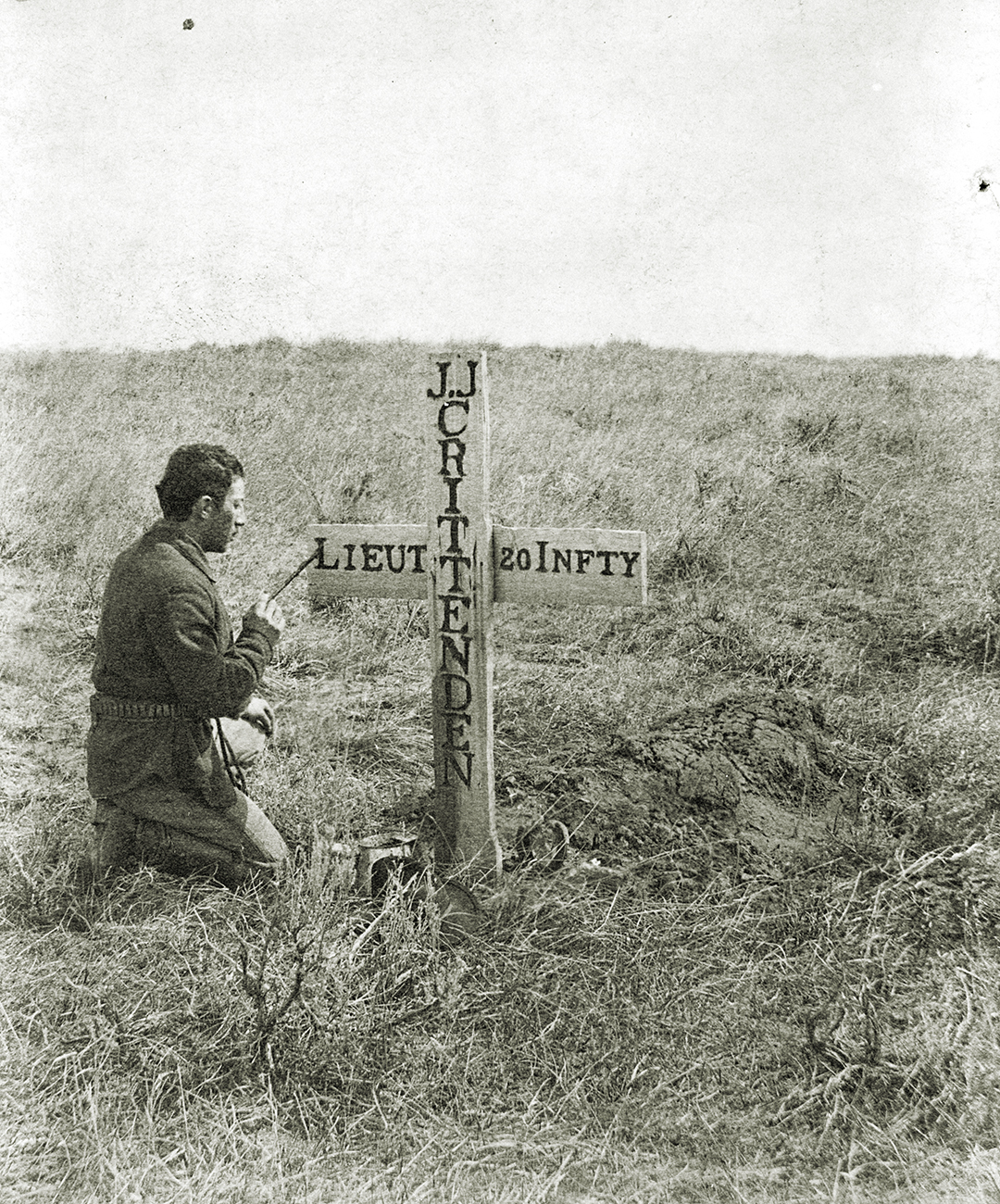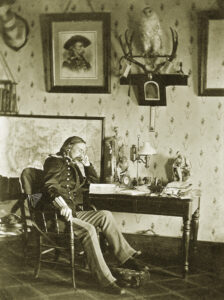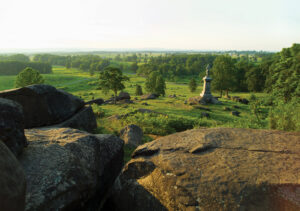The forthcoming Winter 2024 issue of Military History will include a portfolio of the world’s most visitor-friendly battlefields. Among them is Montana’s Little Bighorn National Battlefield, whose origins stretch back to an 1879 expedition by Captain George Sanderson and a patrol of the 11th U.S. Infantry.
That spring, less than three years after waves of Sioux, Northern Cheyenne and Arapaho warriors wiped out Lt. Col. George Armstrong Custer and 267 men of his command, Sanderson was sent to the Little Bighorn with orders to secure all human bones atop Last Stand Hill and mark the mass grave with a pyramid of stones. While Sanderson was there, his men also placed wooden markers on the known burial mounds of individual soldiers. There to record their efforts was Yankton, Dakota Territory, photographer Stanley J. Morrow, whose image above captures a member of the burial party putting the finishing touches on a marker to 2nd Lt. J.J. Crittenden III.
J.J. Crittenden had flunked out of the U.S. Military Academy six months earlier. His father, Colonel Thomas Leonidas Crittenden — a fellow Civil War veteran and friend of Custer — managed to secure his son a commission in the infantry and convinced Custer to take the 21-year-old second lieutenant on campaign with him since the young man wanted field experience. In the aftermath of the battle, Crittenden’s body was found riddled with arrows.
In 1879, the secretary of war preserved the battlefield as a national cemetery to protect the graves of the fallen, which were marked with marble headstones in 1890. A century would pass before the site received its current designation as Little Bighorn Battlefield National Monument. More recently, the National Park Service began adding markers remembering fallen Indian warriors. Several hundred thousand annual visitors make the trek to this emotive, windswept hill.
Battlefields comprise an unusual niche in the tourism market. Some who visit do so out of morbid curiosity, others to walk in the steps of heroes they read about in schoolday history books. Still others come to pay their respects to those who gave, as Abraham Lincoln expressed it, “the last full measure of devotion.” Like the men in Sanderson’s burial detail, they recognize the terrible events that once took place on these grounds, seeking to understand and honor those who fought.
Such hallowed grounds are places of remembrance.





